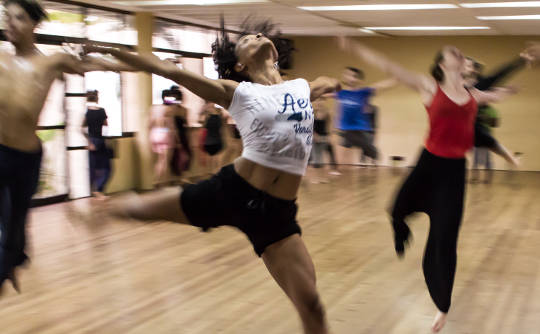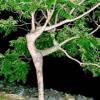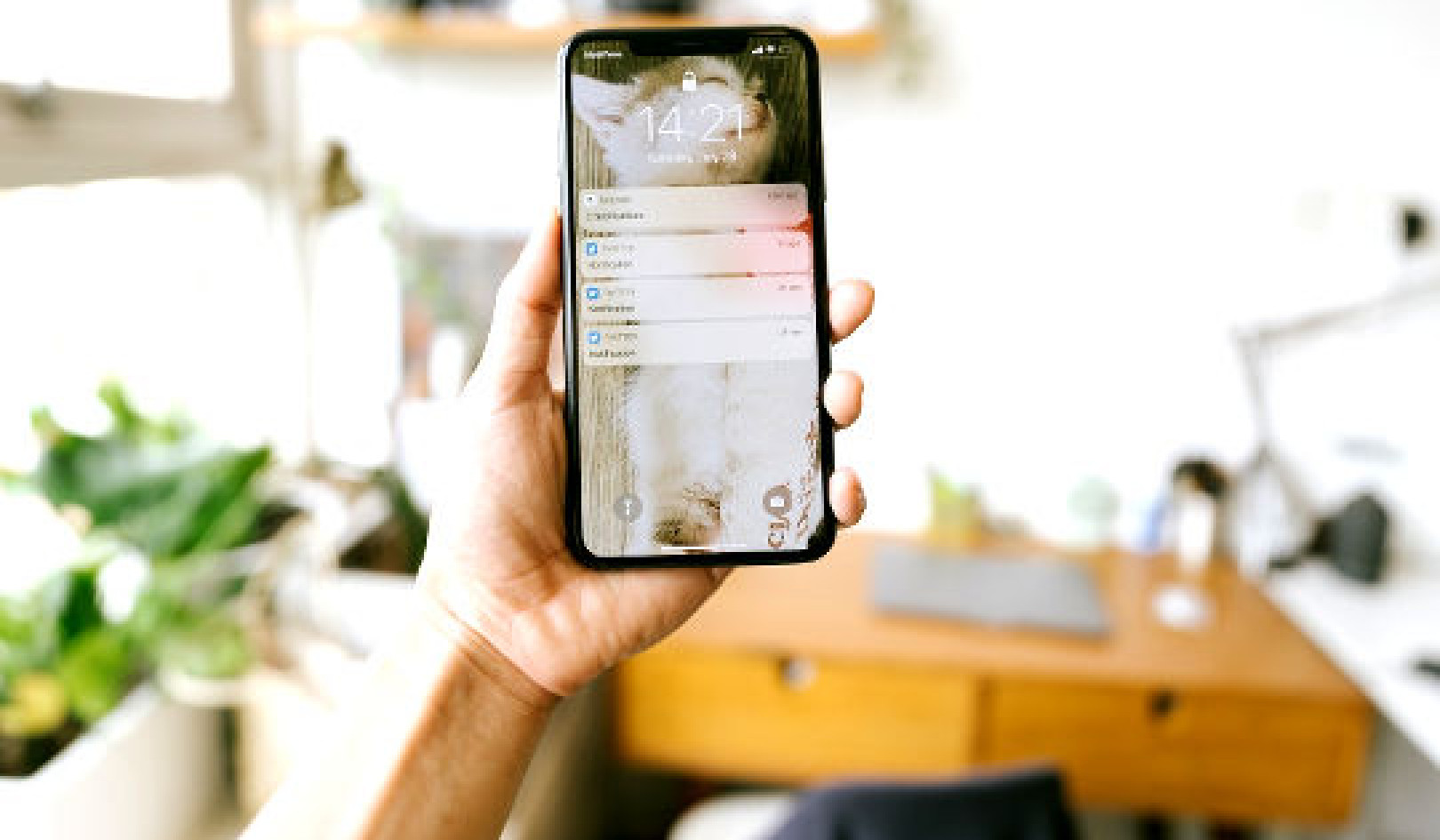
Although we tend to compartmentalize our lives — this is work, this is family, this is entertainment — it doesn’t actually work that way. Everything we think and do and feel is interconnected, and what occurs in one realm of our lives affects all the others.
The women in this study were very aware of how their experiences of dance altered who they are, not just while dancing, but in other dimensions of their lives. Growth, transformation, and empowerment were all terms repeatedly used. Having the experience of feeling freedom and connectivity inside of the class, you know how to have that outside of class.
“...the more I’ve understood that to dance tango you have to be on your axis, on your own center, and grounded… [And it] just kind of expands to the rest of your life so that the rest of your life goes back to that sense of being grounded, of being centered, of being on your own axis, so that as things come at you and hit you, you know where your emotional center is.”
Honoring the Body as a Temple
Bonney taught belly dancing to teenage girls over a ten-year period. She said they learned to “honor their bodies as temples… [as] sacred vehicles for our souls. [Because of this] none of them had drug problems, none of them had drinking problems, none of them got into sexuality until they were, like, nineteen, twenty years old.”
Dance teachers witness many experiences of growth and healing in their students. One group of women prepared for a dance performance over a two-year period. It was their teachers’ belief that dance was able “to take their pain from the dying of the cancerous husband and from the dying mother and put it into grace… to see dance as a tool of transformation that you can go beyond. And it’s not about getting [the pain] out of the way, it’s about getting through it and digesting it and transforming it.”
Benefits of Creative Movement
The benefits of participating in creative movement spread into many other areas of these women’s lives. There were transformations in identifying and expressing “harder” emotions like anger, fear, or sadness; insights into themselves; changes in levels of trust; and openness to simply experiencing life as well as in meeting the demands of their lives. “When I come home I’m just all energized… dance feeds me to do all this other big responsible work that I have to do.”
Through dance, these women naturally developed healthier lifestyles. As one woman put it,
“I have been able to grow in a way that supports my health... I am more of a ‘type A.’ In the past it was sometimes difficult for me to slow down. Now I am able to harmonize better, to organically shift my speed.”
Nurturing Feminine & Masculine Qualities
We all contain both masculine (yang) and feminine (yin) characteristics. Masculine qualities include such things as muscular strength, analytical and rational thinking, active, assertive, and aggressive energy, as well as self-reliance and independence. Feminine qualities include passivity/receptivity, softness, compassion, nurturing as well as intuitive thinking, cooperation, and responsiveness.
For people to be fully balanced, they must have access to both their masculine and feminine natures and be able to draw from both yin and yang energies. Regardless of the form of creative movement the women in my study explored, there were numerous experiences of expanding their sense of themselves and their ways of being in the world. They came to recognize qualities and characteristics within themselves that were previously hidden from their consciousness.
Embodying the Qualities
 One of the dances I encountered in this study was the The Mandala Dance of the 21 Praises of Tara, created by Prema Dasara of Hawaii, as a means of embodying a particular Tibetan Buddhist meditation practice. Tara is considered the feminine aspect of the Buddha and the mother of all Buddhas. The 21 Praises address the qualities of Tara, qualities that we may each embrace and develop within ourselves.
One of the dances I encountered in this study was the The Mandala Dance of the 21 Praises of Tara, created by Prema Dasara of Hawaii, as a means of embodying a particular Tibetan Buddhist meditation practice. Tara is considered the feminine aspect of the Buddha and the mother of all Buddhas. The 21 Praises address the qualities of Tara, qualities that we may each embrace and develop within ourselves.
In the Mandala Dance, women move through a spiral formation until each reaches the center from which she is born as Goddess Tara.
Dancing Brings Positive Change
Two of the women in the study live in Brazil. They described how difficult it can be for many living in the slums to hold onto that sense of the sacred, or of one’s own power. Violence and drug abuse are rampant, growing out of poverty and homelessness. With the support of financial sponsors, a small group of young people are training to become leaders of Dances of Universal Peace, for they have found that doing these dances is bringing a change for the positive within their home communities.
Dances of Universal Peace, formulated by Samuel L. Lewis in the 1960s, are a form of spiritual meditative dance, where the dancers move in a circle while chanting sacred phrases that have been put to traditional or contemporary melodies in a wide range of languages, including Arabic, Persian, English, Hebrew, Hawaiian, and Sanskrit. Many believe that peace can be promoted through the experience of unity as the dancers come to understand that the same truth lies at the heart of all religions.
Developing Awareness Through Dance
At the same time, the practice is purported to develop the participants’ spiritual awareness, awareness of their own body, and the awareness of the presence of others. A few of the female trainees described their experiences of how these dances have helped them to move beyond their problems:/p>
“I like the feeling that the dances bring to us. When I feel anguish, I sing and dance and so it dissolves, this feeling goes away and I feel light. I don’t want to ‘stay small,’ I want to go out and interact.” (16-year-old)
“The Dances of Universal Peace make me feel peace inside. They help to dilute all the bad things I have inside of me.” (20-year-old)
“When I have a problem and I dance, at the end the problem is gone! These dances help to transform my life.” (24-year-old)
Reprinted with permission of the publisher,
Findhorn Press, ©2011. www.findhornpress.com.
Article Source
Dancing on the Earth: Women's Stories of Healing and Dance
edited by Johanna Leseho PhD and Sandra McMaster MEd
 The essays in this dynamic compilation are a testament to dance as a healing art. The women’s narratives all share a deep appreciation for the connection between mental, spiritual, and physical dimensions, offering dance as a transformative power of renewing and rebuilding that bond.
The essays in this dynamic compilation are a testament to dance as a healing art. The women’s narratives all share a deep appreciation for the connection between mental, spiritual, and physical dimensions, offering dance as a transformative power of renewing and rebuilding that bond.
Click here for more info and/or to order this book on Amazon.
About the Editors
 Johanna Leseho, PhD, is an associate professor at Brandon University and a certified laughter yoga instructor. She has studied dance most of her life and currently is a student-teacher of Mandala Dance. Johanna wrote the above article excerpted from the introduction of the book, Dancing on the Earth.
Johanna Leseho, PhD, is an associate professor at Brandon University and a certified laughter yoga instructor. She has studied dance most of her life and currently is a student-teacher of Mandala Dance. Johanna wrote the above article excerpted from the introduction of the book, Dancing on the Earth.
 Sandra McMaster, MEd, is a counselor at Brandon University, where she supports students with self-esteem and leadership workshops. She is a practitioner of Satir therapy, yoga, and other alternative and expressive healing therapies. She has studied Hakomi and numerous types of dance.
Sandra McMaster, MEd, is a counselor at Brandon University, where she supports students with self-esteem and leadership workshops. She is a practitioner of Satir therapy, yoga, and other alternative and expressive healing therapies. She has studied Hakomi and numerous types of dance.
Visit the book's website at http://www.dancingontheearth.ca
Watch a video on: The Healing Power of Dancing in One Billion Rising























